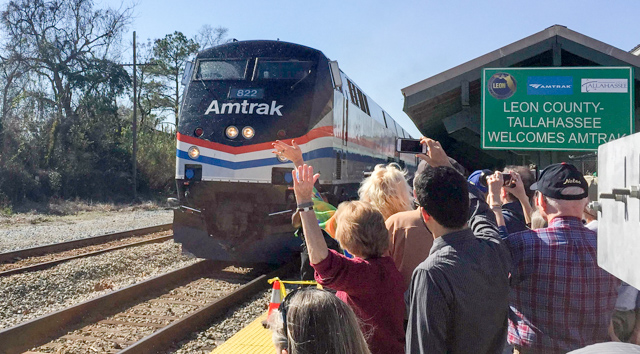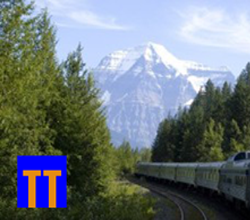Grassroots Support Is the Key to Getting More Trains.
Efforts to improve passenger train service that seem to be making headway are those with active citizen advocacy. When the squeaky wheel is applied, it works. Uh … well, OK … let’s just say that it gets the attention of the people who could make it work. Even that takes persistence and patience and the “ask” has to be specific and realistic.
At the moment, there are several very specific and realistic campaigns being waged, each with a good deal of sustained public support. And believe it or not, there is a sense out there that one or two could actually happen. Here are just three of the higher-profile projects:

Gulf Coast Train. Last February, Amtrak ran an Inspection Train from New Orleans to Jacksonville to check out the infrastructure–basically track, signaling and station facilities. The Sunset lImited operated over the route until Hurricane Katrina washed out stretches of track east of New Orleans. NARP’s president and CEO, Jim Mathews went along and, in fact, NARP was instrumental in turning out crowds at stops along the way as tangible evidence of public support for restoration of rail service. The trip was a big success and the Southern Rail Commission was formed to study the feasibility. They are working on a formal report. Resumption of service ain’t even close to a done deal, but there is progress.
The Daily Cardinal. This train now operates only three days a week on a southerly route between New York and Chicago. NARP created and ran a series of public service radio spots promoting daily service for the train and they ran on more than a hundred radio stations in towns along the Cardinal’s route. That, I have to assume, helped bring about a community meeting in Cincinnati attended by all the players: Amtrak executives, NARP representatives, public officials, and many from the general public. The ball is now in Amtrak’s court.
Sunset Limited to Phoenix. Twenty some years ago, because of infrastructure issues—there’s that word again!—the Sunset Limited was unable to continue stopping at Phoenix. The train was rerouted and, ever since, passengers going to or from Phoenix on the Sunset have had to travel some 35 miles to Maricopa for the train. There is a grassroots campaign building to not only bring the Sunset Limited back to Phoenix, but to run the train every day instead of three days a week.
The key to the progress each of these initiatives is experiencing? Grassroots support! And I am proud to say that NARP has had an active role in all of them.

